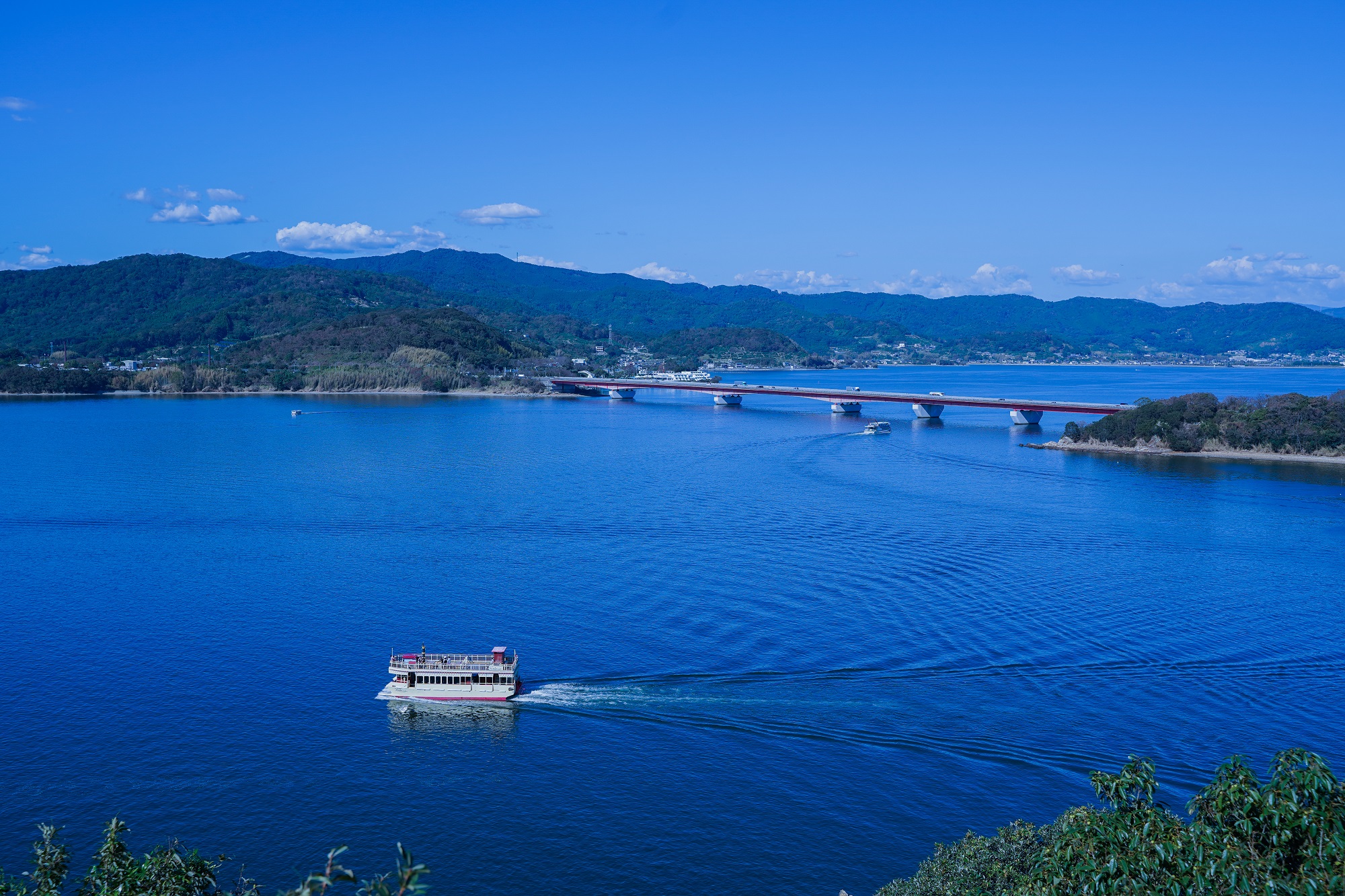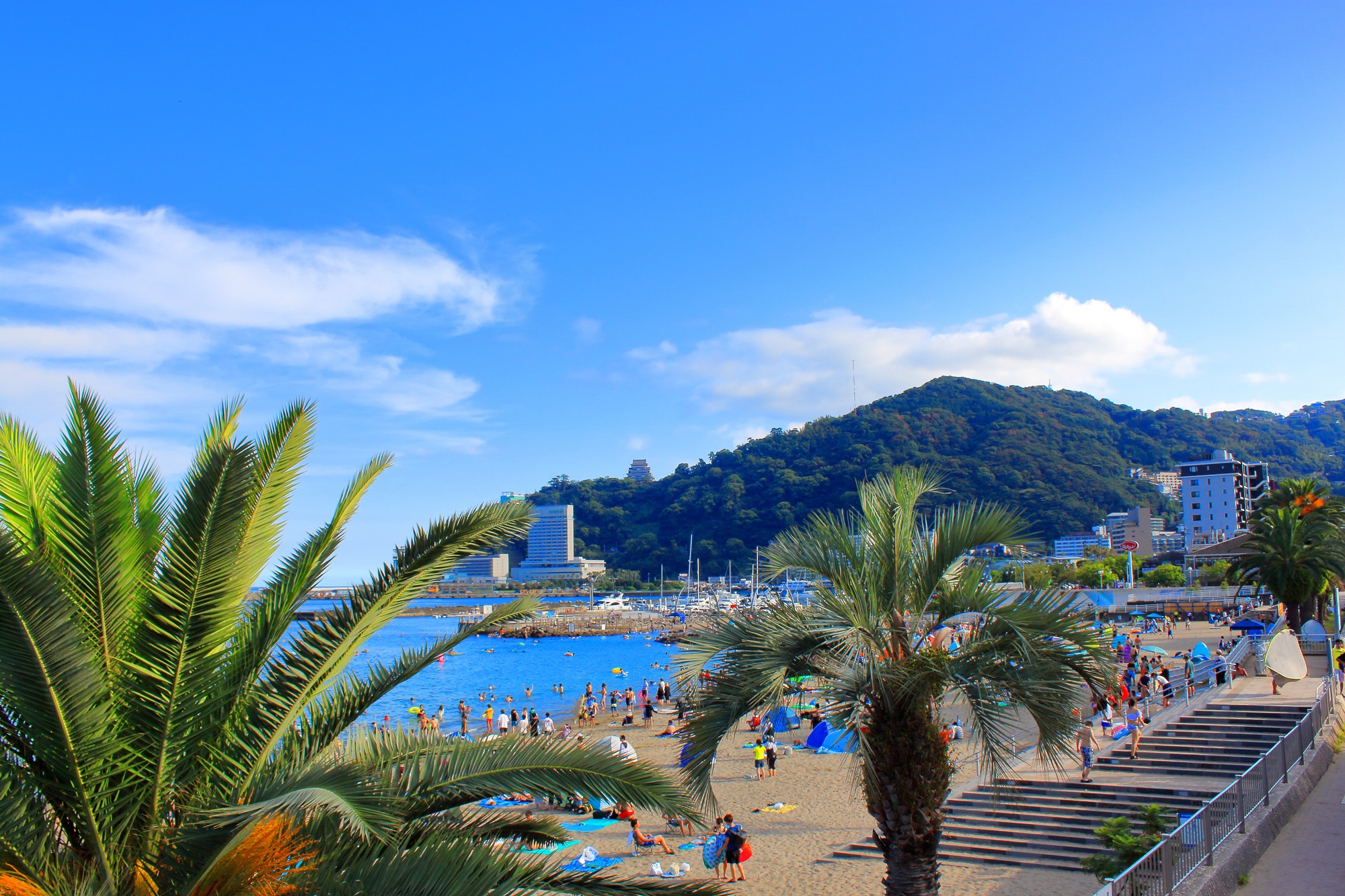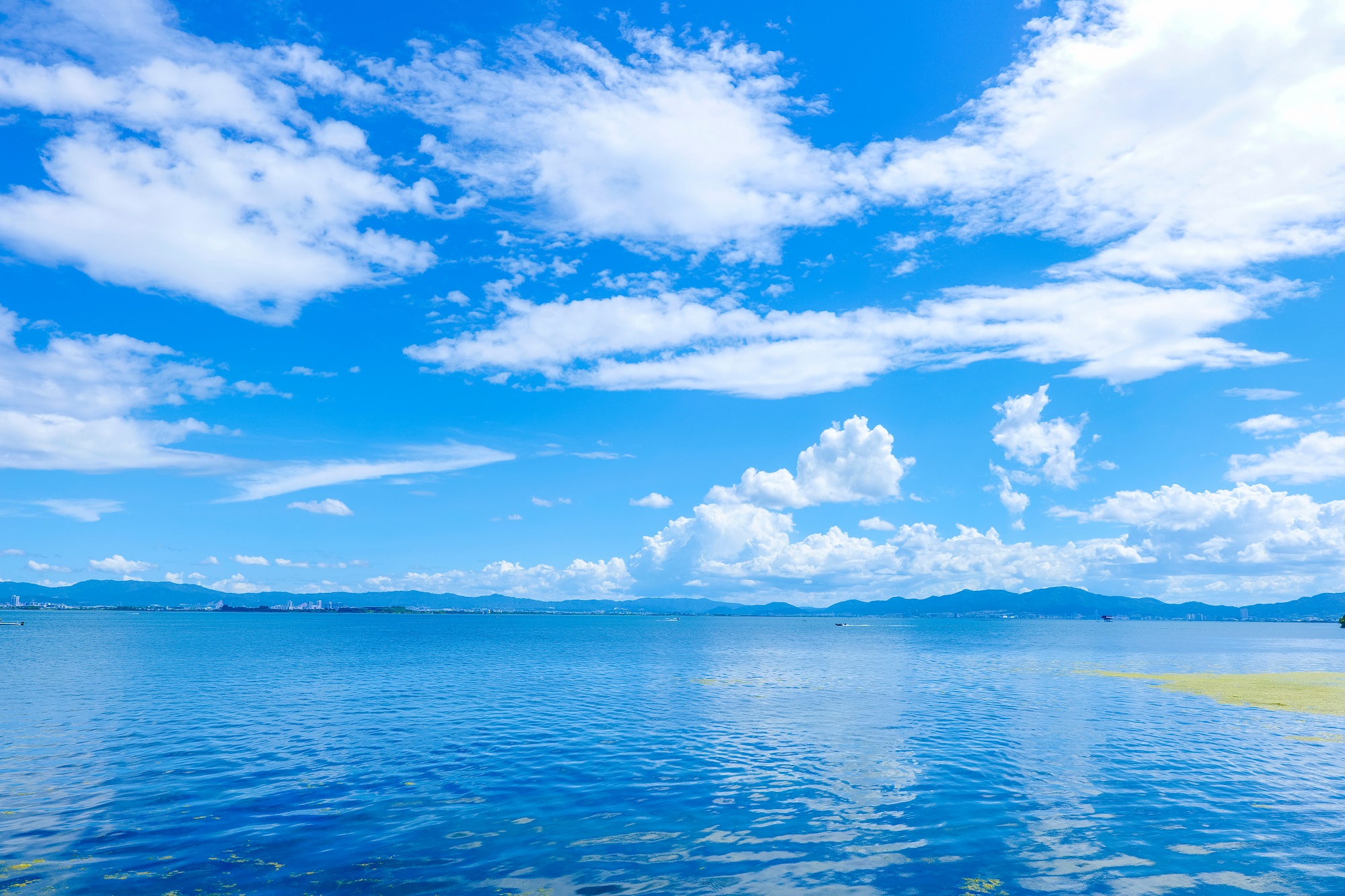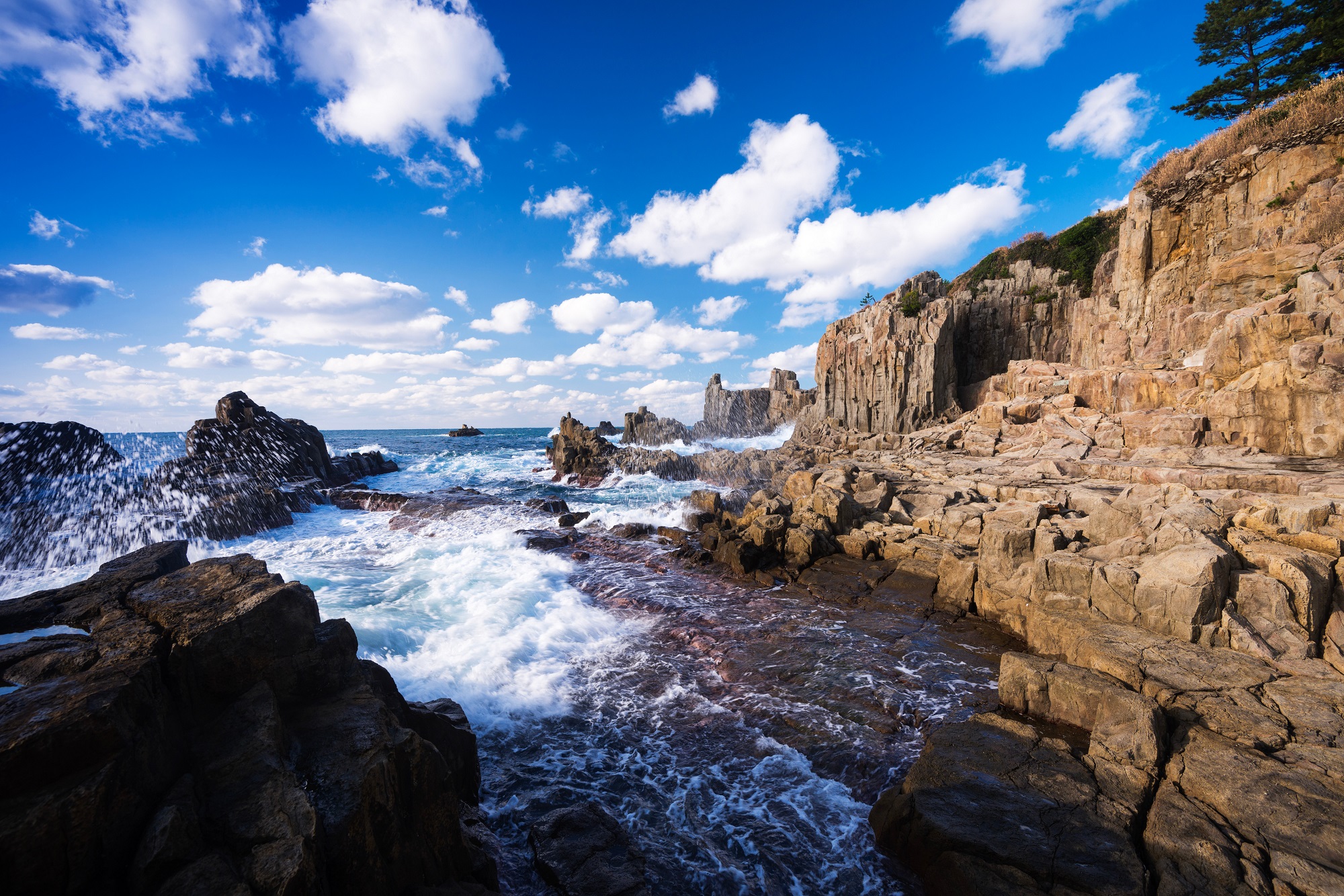Beaches & Coast/海辺と湖岸
Beaches and the Japanese Coast
Surrounded by sea and ocean on all sides, Japan is home to many beautiful beaches. There are countless ways to enjoy the sand and water, including swimming, scuba diving, stand-up paddleboarding, canoeing, sailing, camping and simply having a good ol’ barbecue. There are several hot springs and lodging facilities nearby, so we recommend taking a relaxing stay to enjoy the gorgeous sunsets, spectacular sunrises and starry night skies in between.
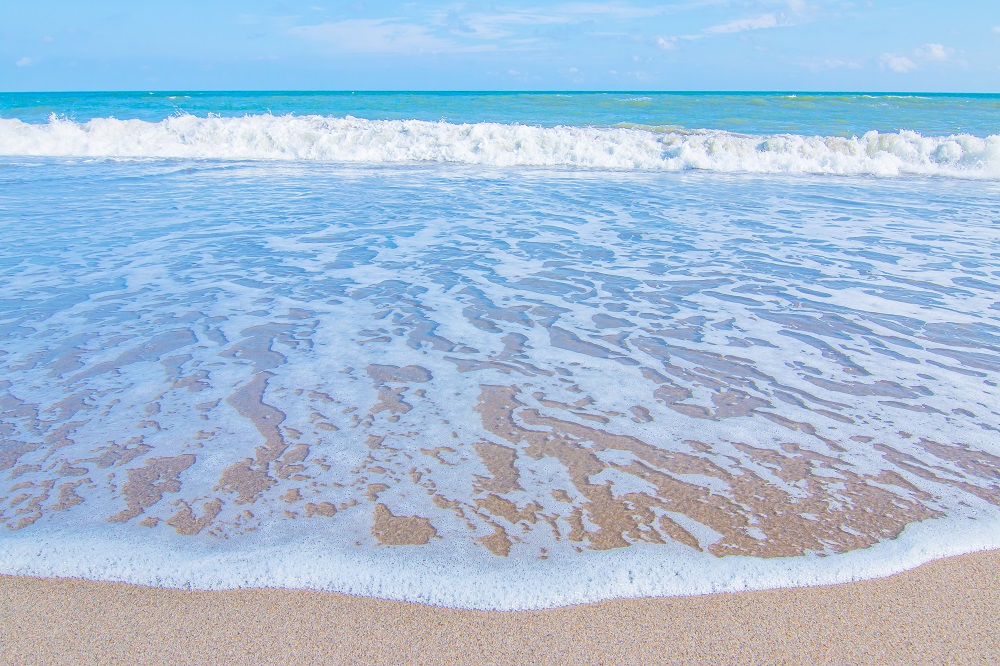
Make the Most of the Beaches and Coast With These Rules and Recommendations
Japanese seas and lakes offer a variety of beaches and coastlines, including white sandy beaches that contrast vividly with the clear blue sea and green pine forests, intricate coastlines and cliffs that tower before you, and comfortable beaches with magnificent scenery and gentle waves. Find and visit a special spot that’s to your liking. However, be aware of the risks and dangers that can arise from spending extended amounts of time in nature. Have fun, but follow the rules and stay safe.
The Main Rules to Follow at Beaches and the Coast
- Do not enter restricted areas or places where swimming is prohibited
- Take your garbage with you when you leave
- Do not cause too much noise
- Do not drink alcohol while swimming or playing sports
- Protect yourself against sunburns and heat stroke
- Watch the weather and do not enter the waters if conditions deteriorate
- Wear a life jacket when sailing or boating
- Do not damage or deface boats or structures
In addition to these general rules, be sure to follow any locally-established rules. Lastly, always be mindful of others when taking photographs.
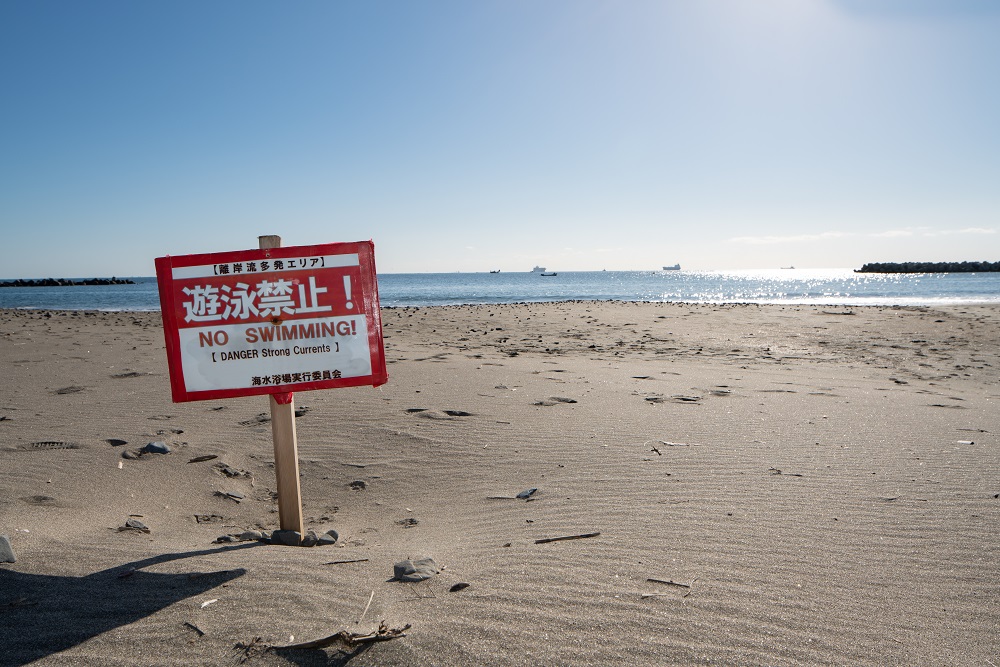
Beach and Coast Recommendations in the Chubu Region
Aichi
Himakajima Island (Minamichita Town, Chita District)
Himakajima, the closest island to Nagoya, is a beautiful place rich in nature and famous for its delicious octopus and puffer fish. You can make a full tour of the island in about two hours, so a leisurely stroll is recommended. True to its name, Sunrise Beach on the east side of the island offers a view of the sun rising over the horizon. The gentle waves make it an ideal spot for swimming. There is a large swing called the Koibito Swing (Lovers’ Swing) at the high point of the island, where you can savor the feeling of flying out into the sea and sky. The west side of the island has a Sunset Beach where visitors can drink in the warm rays of the setting sun, as well as come to the dolphin petting events that are held from mid-May to the end of September.
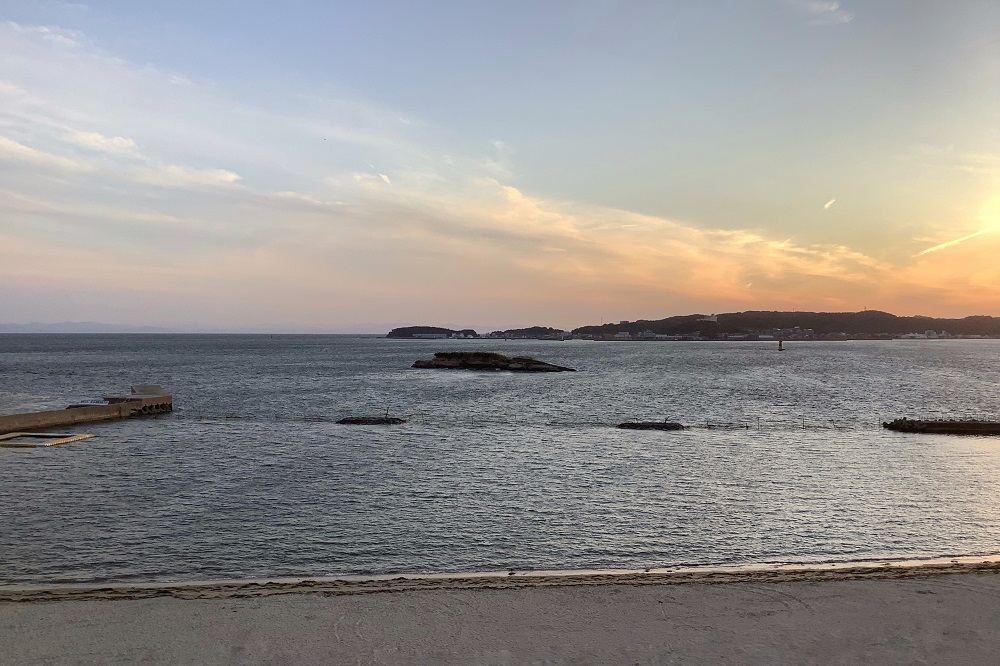
Shizuoka
Dogashima (Nishi-Izu Town, Kamo District)
The Izu Peninsula is known for its scenic beauty, and Dogashima is considered one of its most gorgeous locations. With its intricate coastline, small islands floating in the blue sea, Koganezaki (lit. the Golden Cape) where the cliffs turn gold in the setting sun, 100-meter-long sandy beach of Koganezaki Beach, and Sanshiro Island, which can be walked across at low tide, it is easy to see why people fall in love with this place. The most popular attraction is Tensodo Cave, also known as the Blue Cave. Undersea volcanoes have formed the caves, and the waves have carved holes in their ceilings. When the light shines through from above, the cave walls glow a wondrous blue. You can catch the view from the Dogashima promenade, but it is even more impressive when seen from inside Tensodo Cave itself from aboard one of the sightseeing boats that sail out among the islands. The sunset over Suruga Bay is something else that you must not miss.
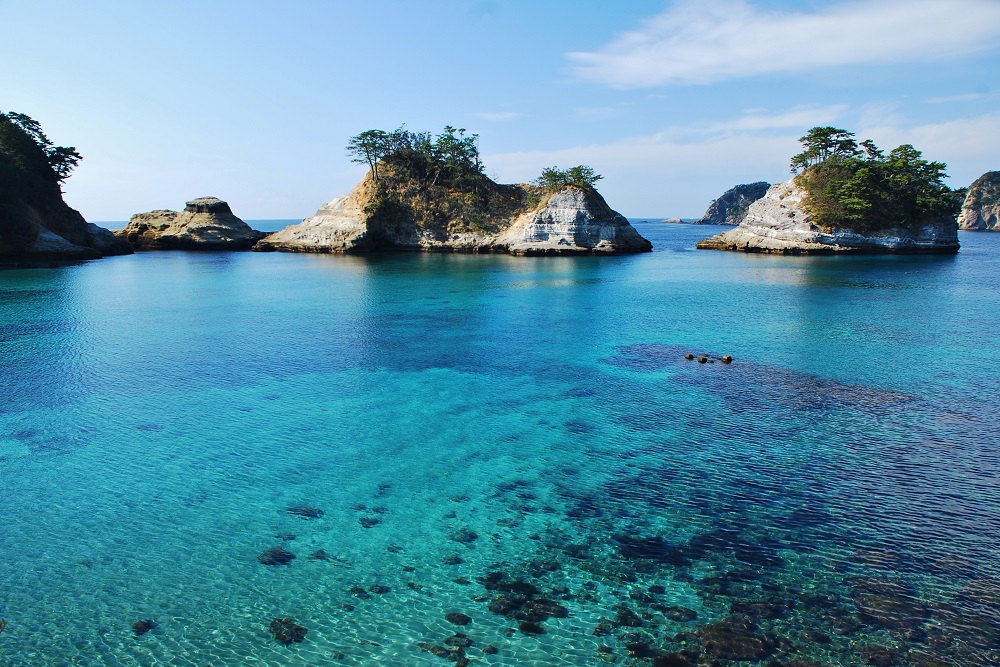
Nagano
Lake Suwa (Suwa City, Okaya City and Shimosuwa Town)
Although Nagano Prefecture does not face the ocean, there are plenty of water sports to enjoy on its lakes. Lake Suwa is the largest lake in Nagano Prefecture, and on a clear day you can see the mountains surrounding the lake, including Kirigamine, Yatsugatake and Mt. Fuji. We recommend taking a sightseeing boat or relaxing boat ride to enjoy the scenery from the lake. Actively-inclined visitors can also go kayaking or rent a bicycle. Held every year in August, the Lake Suwa Fireworks Festival is one of the biggest fireworks displays, allowing visitors to enjoy the fireworks as they light up the lake on late summer nights.
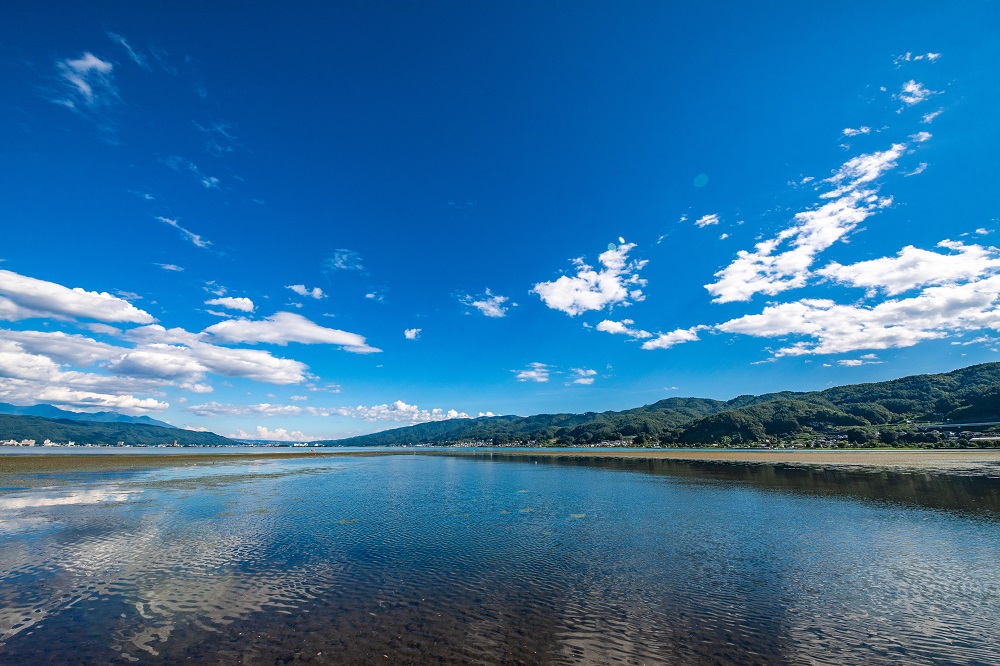
Gifu
Nagara River (Gujo City, Mino City et al.)
Gifu Prefecture is landlocked, but in the summertime its riverbanks are crowded with people enjoying the water. The Nagara River is known for both the high quality of its water and its tradition of cormorant fishing, a fishing method dating back over 1,300 years, in which fisherman use trained birds to catch sweetfish and other fish. People also like to go rafting and canyoning on and near the Nagara River. Rafting consists of around eight people using an inflatable rubber boat and paddles to navigate rivers, dodging powerful rapids and rocky outcroppings along the way. Canyoning involves sliding down canyons and jumping off rocks as one goes down a river. Both can be enjoyed in gorgeous natural surroundings in the clear waters of the Nagara River.
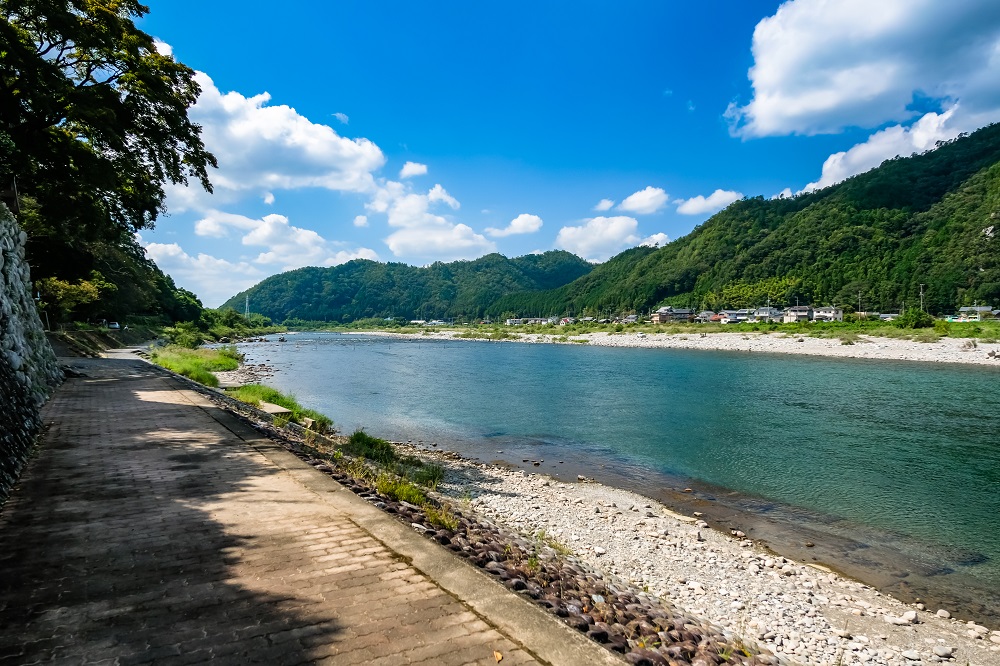
Mie
Azuri Beach (Shima City)
With its clear waters and shallow beach that extends 200 meters into the sea, Azuri Beach is a popular spot for summertime swimmers. With an RV campground and bungalows nearby, you can enjoy camping by the seaside. Sea kayaking is also available. The beach is known for its beautiful, starry night skies that offer a clear view of the Milky Way. On winter evenings, the setting sun overlapping with the rocky outcropping known as Suzumejima looks like Godzilla breathing fire or holding the sun in his mouth, attracting many visitors who want to capture the sight on camera.
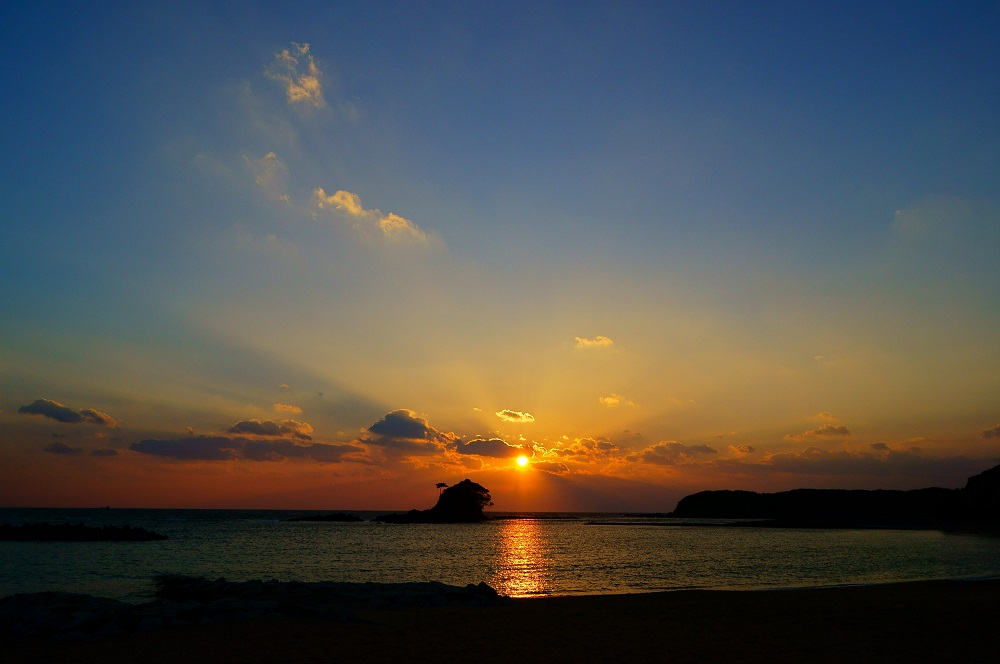
©伊勢志摩観光コンベンション機構
Shiga
Omi Maiko (Otsu City)
Although Shiga Prefecture has access to neither sea nor ocean, it is home to Lake Biwa, the largest freshwater lake in Japan, which people flock to during the summer for a nice, refreshing dip. Omi Maiko Beach is counted among the eight most scenic spots on Lake Biwa, and is popular among families as a child-friendly beach because of its gentle waves and 3-km-long stretch of sand. Just a 2-minute walk from Omi Maiko Station on the JR Kosei Line, the beach is also easy to access, and visitors can enjoy swimming, fishing, cycling, camping, and other activities while enjoying the magnificent scenery of Lake Biwa, its white sandy beaches, the lush pine forests and the mountains in the distance.
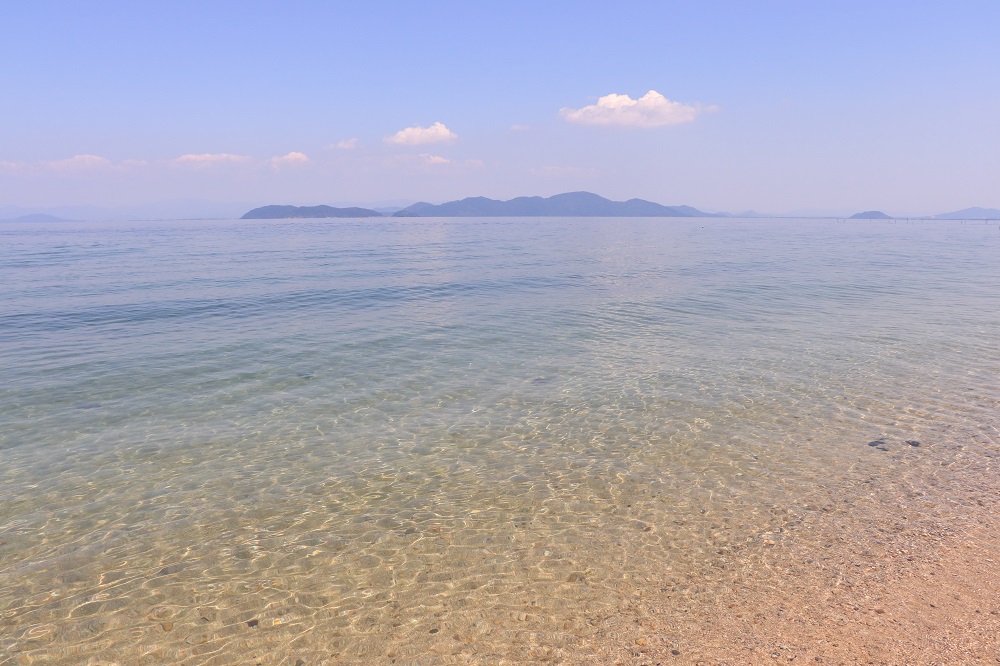
Fukui
Wakasa Wada Beach (Takahama Town)
With its clear, shallow waters and white sands, Wakasa Wada Beach was, together with Yuigahama Beach in Kanagawa Prefecture, the first beach in Asia to receive the Blue Flag international environmental certification. Blue Flag environmental certifications are awarded to beaches that meet strict criteria and exhibit “pure water, clean coasts, safety and access for all.” The contrast between the white sandy beach, the shining blue sea, and Mt. Aoba, popularly known as the Fuji of Wakasa, is truly picturesque. There are also beach houses, barbecue sites and campgrounds, making it a great place to take the kids.
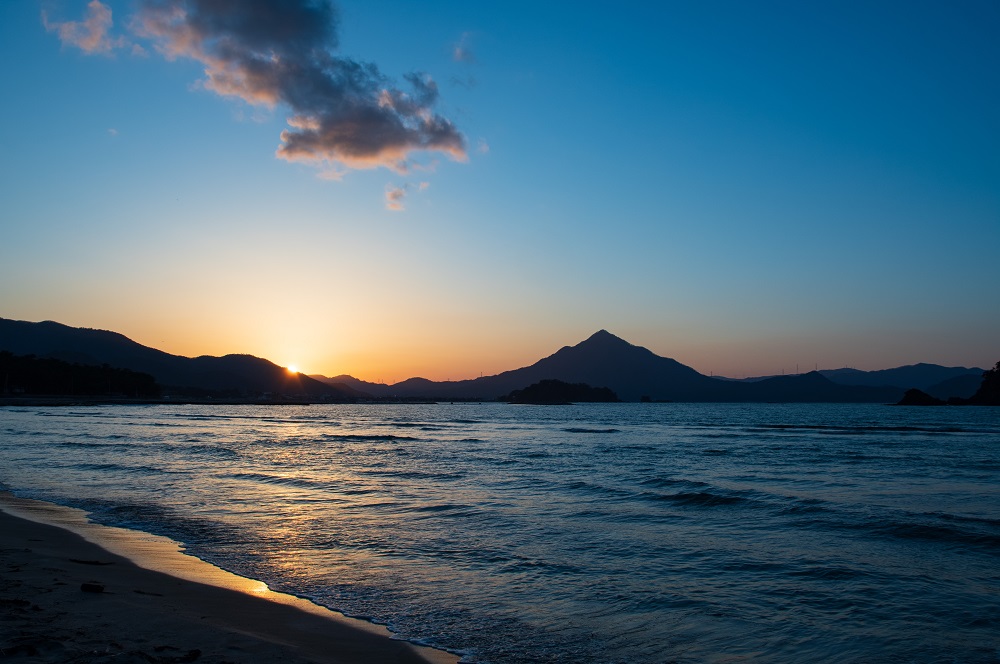
Ishikawa
Imahama Coast (Hodatsushimizu Town, Hakui District)
The clear, shallow waters and beautiful views of Imahama Beach attract many visitors to the Imahama Coast during the summer. The Imahama Coast is located at the entrance to Chirihama Nagisa Driveway, the only sandy beach in Japan where cars and motorcycles are allowed to drive, so you can park your car on the beach. The driveway extends roughly 8 km from Imahama, allowing visitors to savor a leisurely drive along the lapping waves of the beach. When driving, watch out for pedestrians and bicycles, do not drive too fast and drive safely. Be careful not to get your tires stuck in the sand.
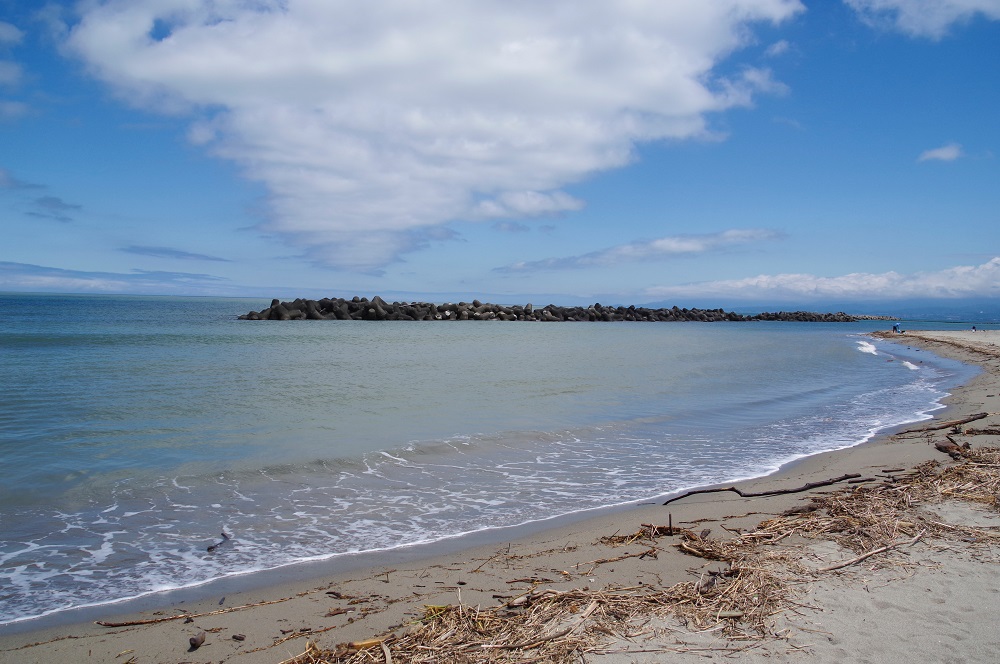
Toyama
Iwasehama Beach (Toyama City)
Iwasehama Beach offers a spectacular view of the Tateyama Mountain Range, and the vivid contrast of the Koshi no Matsubara black pine trees, white sandy beach and clear blue ocean is truly magnificent. It takes about 25 minutes from Toyama Station to Iwasehama Station on the Toyamako Line operated by the Toyama Chiho Railway. From there, the beach is just a five-minute walk away, and the ease of access makes it popular among the elderly and families with children. Enjoy the spectacular beach and then stop by the Iwase Area, which is known for its charming, old-fashioned townscape. Iwase Area faces Toyama Bay and once prospered from the trade of the Kitamae ships connecting Hokkaido and Osaka. It still retains the atmosphere of those bygone days, so you can easily imagine that you have traveled back in time.
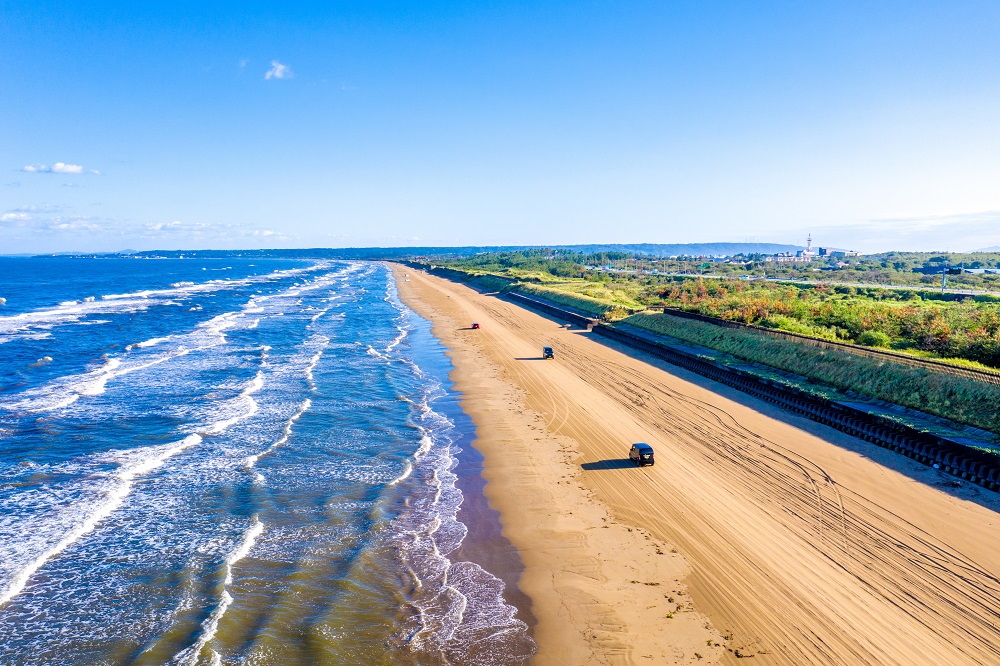
Destinations
Lake Hamana/浜名湖(Shizuoka)
Lake Hamana is a brackish-water lake that spans the boundaries of Hamamatsu and Kosai cities. With a circumference of 114 km, it is the largest brackish-water lake in Japan. Eels, seaweed, oysters, an....
Atami/熱海(Shizuoka)
Atami is celebrated as one of the finest hot spring resorts in Japan. It is said that not only did Tokugawa Ieyasu visit Atami Onsen for a hot-spring cure, but he also had the restoratively gentle spa....
Lake Biwa/琵琶湖(Shiga)
The pride of Shiga Prefecture, Lake Biwa, is the largest freshwater lake in Japan. It is also the oldest lake in the country with a history dating back as far as four million years, and is one of the ....
Tojinbo/東尋坊(Fukui)
Tojinbo is the most famous tourist attraction in Fukui Prefecture. The huge, vertical, pillar-shaped rocks cluster along the coastline for about a kilometer, an arresting view. The sight of the rough ....

